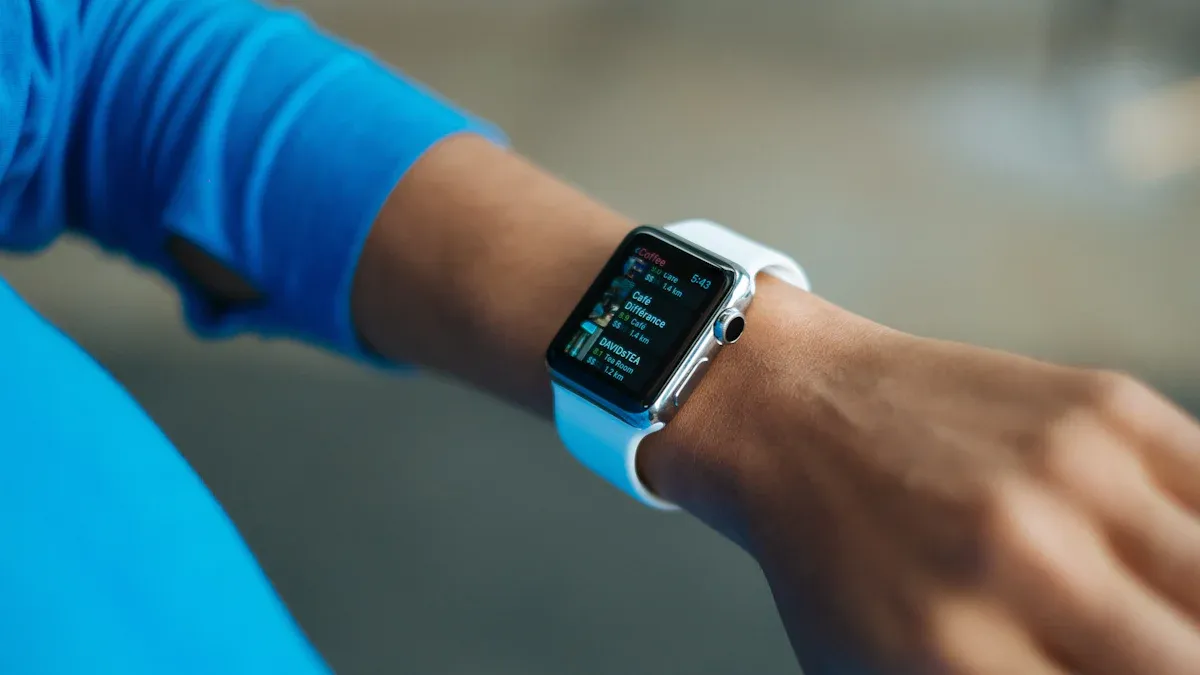
The 3.7V lithium polymer battery is the unsung hero powering modern gadgets. This battery provides an ideal combination of high energy capacity and low weight. Its specific voltage and high discharge rate deliver excellent performance for a specific application.
A tiny powerhouse, this battery is an ideal energy source. Its design balances power capacity, high discharge, and total energy capacity. This gives it a fantastic power capacity for its size.
Why a Lithium Polymer Battery Excels

A lithium polymer battery stands out for two primary reasons. Its incredible energy-to-weight ratio and its simple, efficient single-cell design make it a top choice for modern electronics. These factors contribute to its excellent performance and versatility.
High Energy, Low Weight
The most significant advantage of a lithium polymer battery is its alta densidad energética. Energy density measures how much power a battery can store for its size and weight. This battery packs more power into a lighter package compared to older technologies.
| Tipo de batería | Weight Category | Specific Energy Density (Wh/kg) |
|---|---|---|
| LiPo | Lightest | 150-250+ |
| Li-ion | Light | 150-190 |
| NiMH | Middle | 60-120 |
This high energy density comes from its advanced chemistry. Scientists improve the battery capacity by adjusting the materials inside. Using silicon-carbon materials for the negative electrode and optimizing the nickel content in the positive electrode helps boost the overall energy capacity. The battery also uses a solid gel-like polymer for its electrolyte instead of a liquid, which contributes to its lightweight profile.
Nota: Temperature greatly affects battery performance. Low temperatures can reduce a battery’s effective capacity and its ability to discharge power quickly. For optimal performance and a high discharge rate, the battery should be kept at a moderate temperature, ideally around 20°C (68°F).
A high discharge rate is crucial for devices like drones that need sudden bursts of power. The discharge rate (C-rating) tells you how fast the battery can safely release its energy. A higher discharge rate means better acceleration and responsiveness. The battery’s physical case can also influence its capacity and discharge capability.
| Característica | Hard Case LiPo | Soft Case (Pouch) LiPo |
|---|---|---|
| Capacidad (mAh) | Generally lower | Can achieve higher capacity |
| Discharge Rate (C-rate) | Generally lower | Can achieve a higher discharge rate |
Single-Cell Battery Design
Many small gadgets use a single-cell lithium polymer battery. This basic unit, known as a “1S” pack, has a nominal voltage of 3.7 volts. This 3.7V rating is the average voltage during a standard discharge cycle, while its peak voltage is 4.2V when fully charged. This simple design offers major benefits in safety and efficiency.
A single-cell battery is inherently safer than a multi-cell battery. Its simple structure and lower voltage reduce risks.
- Single cells have a lower chance of overheating.
- They avoid the complex problem of cell balancing.
- Charging is straightforward without needing special circuits to keep multiple cells at the same voltage.
When a battery has multiple cells, an imbalance can cause some cells to work harder than others. This imbalance reduces the total capacity and can damage the battery over time. A single-cell design eliminates this concern, simplifying the device’s electronics and improving reliability. Proper care during each charge and discharge cycle is still important. A well-maintained battery can last for hundreds of cycles, but its maximum capacity will naturally decrease over its lifespan. The goal of each discharge is to use the stored energy efficiently without straining the battery, which helps maintain its long-term capacity and performance. The battery’s ability to handle a fast discharge is key, and a high discharge rate ensures it can deliver power on demand.
Scaling Voltage and Capacity for Performance
The single-cell lithium polymer battery offers a solid foundation, but its true strength lies in its scalability. Engineers adjust the voltage and capacity to meet specific performance demands, turning this simple cell into a versatile power solution for a wide range of applications.
Powering Small Motors
En 3.7V lithium polymer battery provides an excellent base voltage. This voltage efficiently powers the small motors and microcontrollers in mini-drones and lightweight RC models. Many microcontrollers, like the 3.3V Arduino Pro Mini, operate perfectly within the battery’s voltage range. This compatibility simplifies the device’s design, as it requires only simple voltage regulation. The battery’s nominal voltage and capacity are perfectly suited for these compact electronics, providing a balance of power and runtime without adding unnecessary weight. The goal is to match the battery’s voltage and capacity to the device’s needs for optimal performance. A fast discharge is also key for responsive control. The battery’s ability to handle a quick discharge ensures the device reacts instantly.
Scalable Power with Series Packs
A single 3.7V cell is the fundamental building block for more power. Manufacturers connect cells in series to increase the total voltage. A ‘2S’ battery pack contains two 3.7V cells, creating a nominal voltage of 7.4V. This higher voltage directly increases a motor’s RPM, resulting in more speed and thrust for larger models. While connecting cells in series boosts voltage, the total capacity (mAh) of the battery remains the same as a single cell’s capacity.
However, voltage and capacity are not the only factors. The battery’s discharge rate, or C-rating, is critical. The discharge rate measures how fast a battery can safely release its energy. High discharge rates allow for the intense bursts of power needed for quick drone maneuvers or RC car acceleration. A battery with a higher discharge rate can deliver more current on demand.
C-rate (C) = charge or discharge current in amperes (A) / rated capacity of the battery (Ah)
For example, a battery with a high discharge rate can handle a rapid discharge without damage. This is why high discharge rates are essential for racing drones. The battery’s capacity and discharge rate work together to define its power output. A high capacity with a low discharge rate is good for long, steady use. A battery with high discharge rates and sufficient capacity is ideal for high-power tasks. The discharge capacity is a key metric. The discharge rate determines the speed of the discharge.
The Ideal Battery Type Lithium Polymer for Gadgets

The battery type lithium polymer is an ideal power source for today’s most innovative gadgets. Its electrical properties and physical form make it a perfect match for compact, high-performance devices. This excellent application suitability comes from its unique design.
Compatibility with Modern Electronics
The operating voltage of a lithium polymer battery is a key advantage. A single cell provides a nominal voltage of 3.7V, peaking at 4.2V. This range is perfectly suited for modern electronics in wearable tech. Many components, such as 3.3V touch screen displays, operate at a lower voltage. Engineers use highly efficient switching regulators to step down the battery voltage. These regulators maintain 85% to 95% efficiency. This process preserves the battery’s total capacity and ensures a stable discharge. The battery’s consistent voltage during discharge is an ideal feature. This makes the battery type lithium polymer an ideal choice, as it maximizes runtime from its available capacity. The battery’s discharge rate and overall capacity are ideal for this purpose. A steady discharge is ideal for sensitive electronics.
Did You Know? 💡 The high efficiency of modern voltage regulators means very little energy from the battery’s capacity is lost as heat. This is ideal for keeping wearable tech cool and comfortable. The battery’s discharge is managed perfectly.
Enabling Compact and Thin Designs
The design of the battery type lithium polymer is ideal for creating slim, lightweight products. Unlike traditional cylindrical batteries with rigid steel shells, this battery uses a flexible pouch. This pouch allows manufacturers to create batteries in custom shapes and sizes. The battery’s discharge performance and high capacity are ideal.
This flexibility is essential for many modern devices:
- Smart cards and RFID tags
- Portable medical sensors
- Wearable tech like smartwatches
The pouch design allows for a higher energy capacity in a smaller space. This is an ideal characteristic for devices where every millimeter counts. The battery’s ability to handle a quick discharge is also a major benefit. The battery type lithium polymer offers an ideal balance of capacity and form factor. The battery’s discharge profile is ideal for these applications. The battery’s discharge is reliable. The battery’s capacity and discharge are ideal.
The 3.7V battery achieves its success through an unmatched balance of features. Its superior energy-to-weight ratio stems from innovations in cathode materials and optimized cell designs. The battery provides excellent efficiency as a single-cell solution and scales easily for more demanding tasks. This combination delivers the reliable performance needed for modern electronics.
Future trends like solid-state technology and AI-driven battery management will continue to enhance its capabilities, solidifying its role as the essential power source for innovative compact devices.
PREGUNTAS FRECUENTES
What are the most important safety features?
Key safety features include built-in protection circuits. These circuits provide over-charge protection and over-discharge protection. These safety features offer crucial protection for the battery. Additional safety features like thermal monitoring provide even more protection. These safety features are essential for a safe discharge. This protection is vital.
How does the discharge rate affect performance?
The discharge rate measures how fast a battery can safely discharge its energy. A high discharge rate allows for a rapid discharge, giving devices quick bursts of power. This fast discharge is crucial for performance. The discharge rate directly impacts a device’s responsiveness during a discharge.
How can I extend a LiPo battery’s lifespan?
Proper care extends a battery’s lifespan. Users should avoid a deep discharge and store the battery near its nominal voltage. This simple protection improves its cycle life. Following charging guidelines also boosts its lifespan and cycle life. This protection helps maintain battery health.
What makes top lithium polymer batteries stand out?
Top lithium polymer batteries offer a superior discharge rate and a longer cycle life. They include advanced safety features for excellent protection. This includes reliable over-charge protection. A consistent discharge and high discharge rate define their quality. The discharge rate is a key factor.
Nota: A battery’s discharge rate is not constant. Factors like temperature and age can affect the maximum discharge rate and the overall discharge performance. Always check the manufacturer’s specifications for the correct discharge rate. The best over-charge protection also has safety features.

